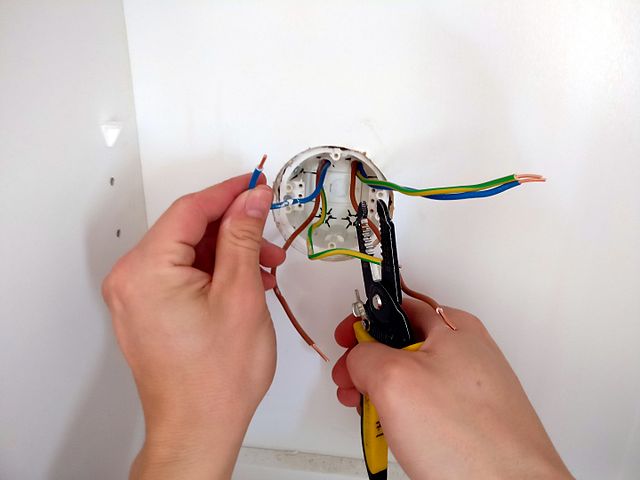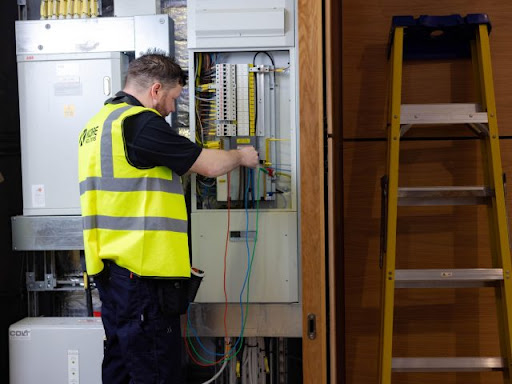
In an era where energy costs are rising, finding ways to save money on your electricity bill is more important than ever. As a professional electrician with years of experience in the field, I’ve seen firsthand how small changes can lead to significant savings. In this blog post, I’ll share practical tips and insights on how to reduce your electricity consumption and lower your bills, helping you keep more of your hard-earned money in your pocket.
Understand Your Electricity Usage
Before diving into specific tips, it’s crucial to understand how and where you use electricity in your home. Start by reviewing your electricity bill to identify your usage patterns. Most bills will show your consumption over time and might provide insights into peak usage periods. This information is valuable for pinpointing areas where you can cut back.
1. Switch to Energy-Efficient Lighting
One of the simplest ways to reduce your electricity bill is to upgrade your lighting. Traditional incandescent bulbs are not only less efficient but also generate a lot of heat, which can increase cooling costs in the summer. Instead, consider switching to:
- LED Bulbs: These use up to 80% less energy than incandescent bulbs and have a much longer lifespan. They are available in various brightness levels and color temperatures to suit any room.
- CFLs (Compact Fluorescent Lamps): While not as efficient as LEDs, CFLs still use less energy than incandescent bulbs and are a good alternative if LEDs are not an option.
2. Optimize Your Heating and Cooling Systems
Heating and cooling are typically the largest contributors to your electricity bill. Here’s how you can make these systems more efficient:
- Upgrade to a Programmable Thermostat: Programmable thermostats allow you to set specific temperatures for different times of the day. For example, you can lower the temperature while you’re away at work and have it warm up before you return home.
- Regular Maintenance: Ensure your HVAC system is running efficiently by having it serviced regularly. Clean or replace filters as needed, and check for any issues that might affect performance.
- Seal Drafts: Inspect windows, doors, and other openings for drafts. Use weatherstripping or caulk to seal gaps, preventing conditioned air from escaping and outside air from entering.
3. Use Energy-Efficient Appliances
Older appliances can be energy hogs. When it’s time to replace an appliance, choose energy-efficient models. Look for appliances with the ENERGY STAR® label, which signifies that they meet energy efficiency guidelines set by the U.S. Environmental Protection Agency.
- Refrigerators: Modern refrigerators use less energy and often have features like energy-saving modes.
- Dishwashers and Washers: Energy-efficient dishwashers and washing machines use less water and electricity compared to older models.
4. Unplug Devices and Use Power Strips
Many electronic devices continue to consume power even when they’re turned off, a phenomenon known as “phantom” or “vampire” energy consumption. To combat this:
- Unplug Devices: Unplug chargers, small appliances, and electronics when they’re not in use.
- Use Power Strips: Plug multiple devices into power strips and turn them off when not in use to cut off power supply completely.
5. Implement Smart Home Technology
Smart home devices can help you monitor and control your energy usage more effectively:
- Smart Plugs and Outlets: These allow you to control and monitor the energy consumption of connected devices through a smartphone app.
- Smart Lighting Systems: These systems can be programmed to turn lights on and off based on your schedule, reducing unnecessary usage. If you are interested in learning more about residential electrician, please take a look at their page for more info.

6. Insulate Your Home
Proper insulation helps maintain a consistent temperature in your home, reducing the workload on your heating and cooling systems. Consider:
- Attic Insulation: Adding or upgrading insulation in your attic can prevent heat from escaping in the winter and keep your home cooler in the summer.
- Wall Insulation: Ensure that your walls are well-insulated, particularly if you live in an older home. This can significantly impact your energy consumption.
7. Use Energy Wisely in the Kitchen
The kitchen is another area where you can make small changes to save on electricity:
- Microwave vs. Oven: Use a microwave for smaller portions and reheating, as it uses less energy than an oven.
- Cook with Lids On: When using the stove, cooking with lids on pots can reduce cooking time and save energy.
- Avoid Preheating: Unless you’re baking, avoid preheating your oven. Many dishes cook just fine without this step.
8. Manage Your Water Heater
Water heaters are often overlooked but can be a significant source of energy consumption. To optimize their efficiency:
- Lower the Temperature: Set your water heater’s temperature to 120°F (49°C). This is usually hot enough for most uses and can reduce energy consumption.
- Insulate the Tank: Insulating your water heater tank can help keep the water hot for longer, reducing the need for additional heating.
- Consider a Tankless Water Heater: Tankless (or on-demand) water heaters heat water only when needed, which can be more energy-efficient than traditional tank heaters.
9. Perform an Energy Audit
An energy audit can provide a comprehensive overview of how your home uses energy and where improvements can be made. Many utility companies offer free or discounted energy audits, or you can hire a professional to assess your home’s energy efficiency.
Conclusion
Reducing your electricity bill doesn’t have to be complicated or expensive. By implementing these tips from a professional electrician, you can make meaningful changes that lead to significant savings. From upgrading to energy-efficient appliances and lighting to optimizing your heating and cooling systems, there are plenty of opportunities to cut costs without sacrificing comfort.
Start with a few small changes and gradually implement more as you go. Not only will you see a reduction in your electricity bill, but you’ll also be contributing to a more sustainable environment. Every little bit helps, and together, these efforts can make a big difference.

